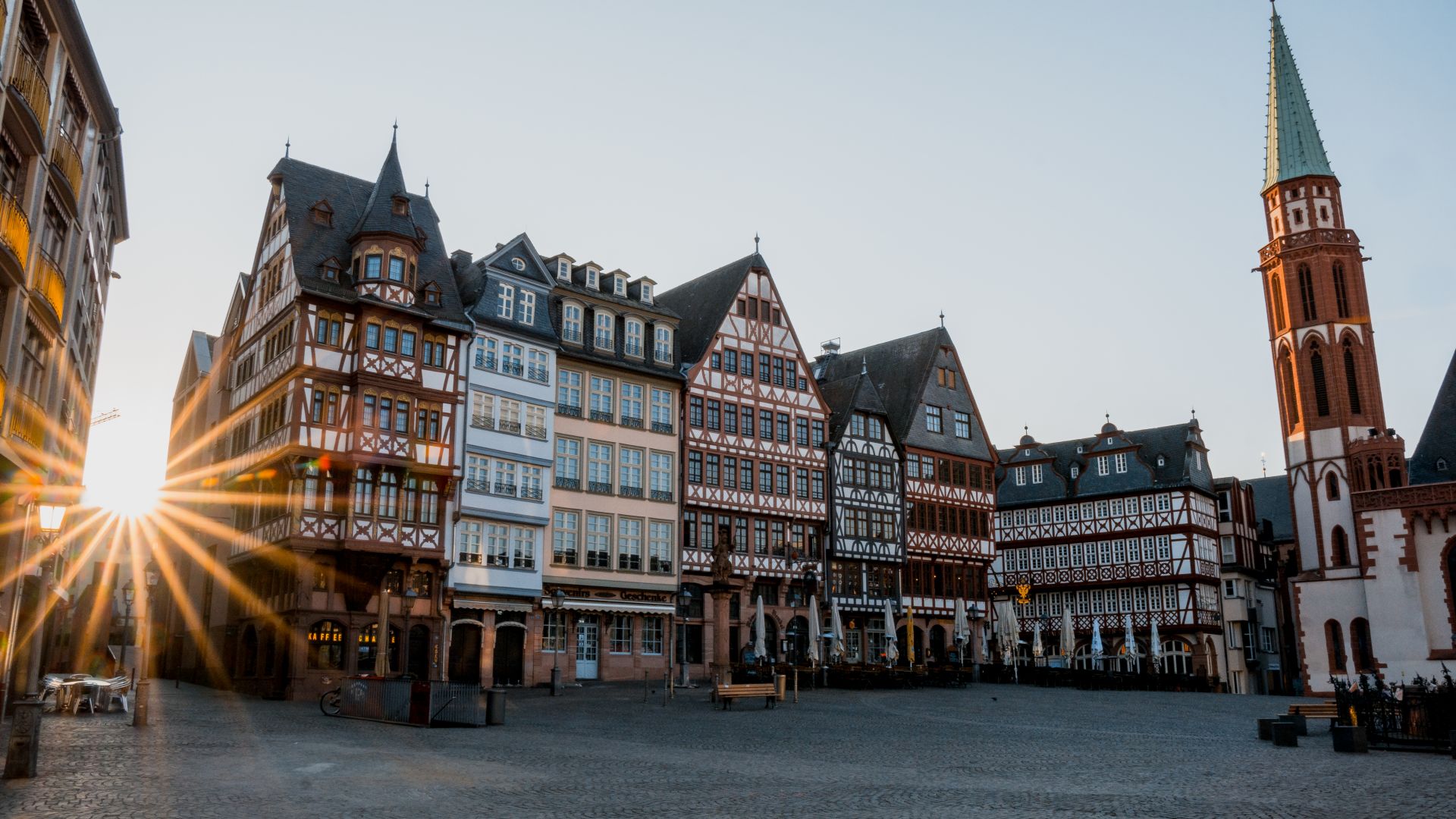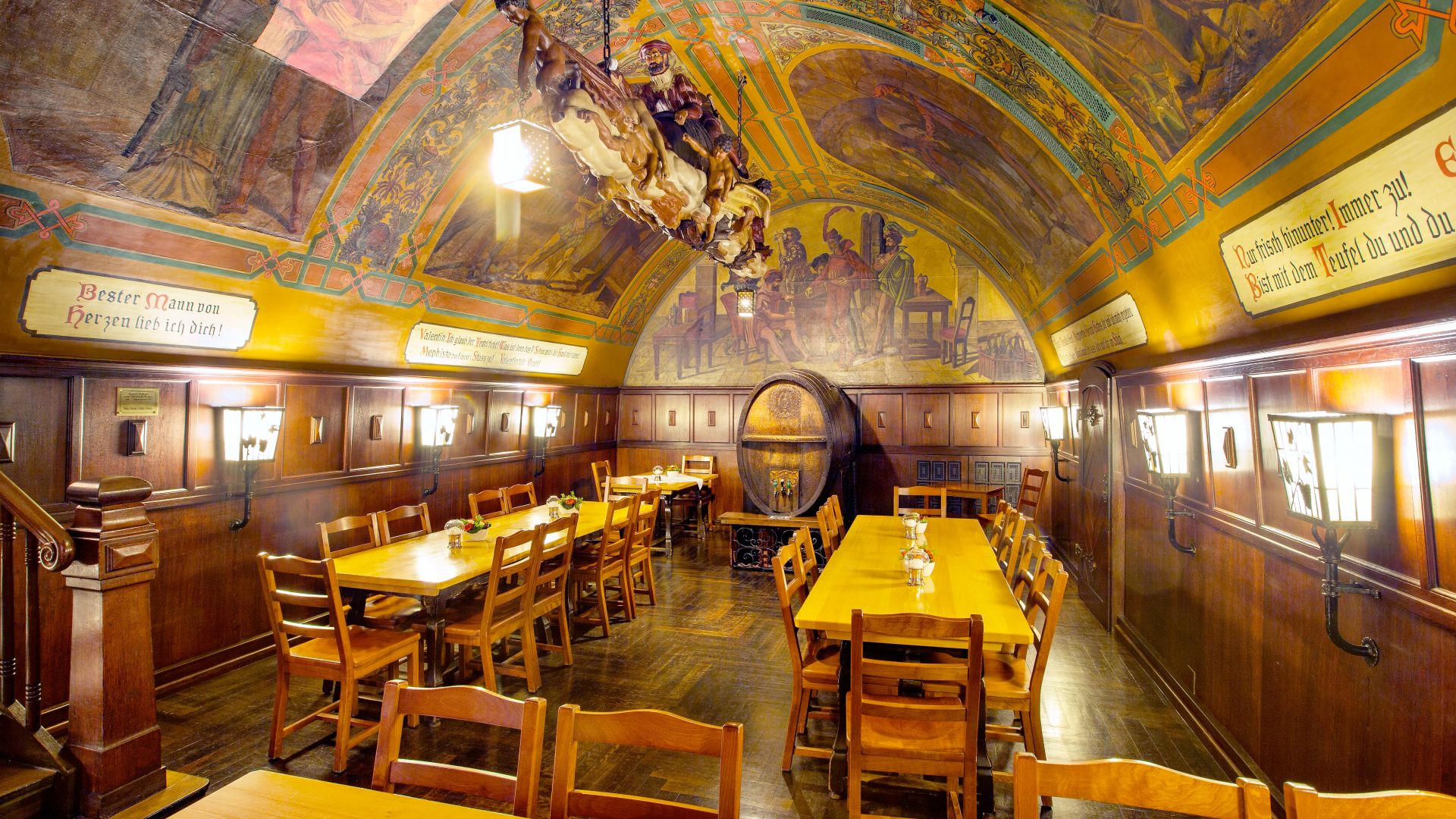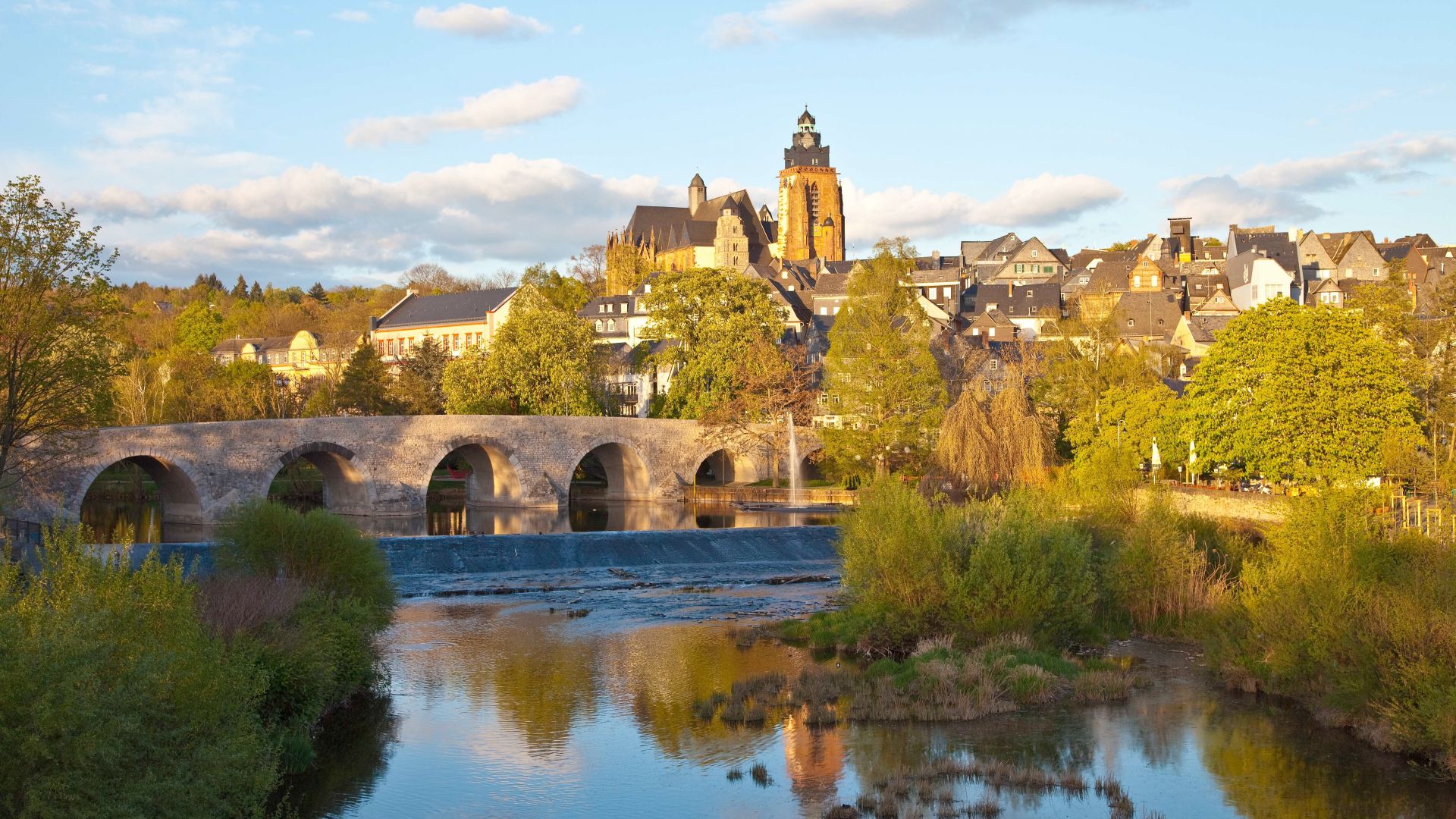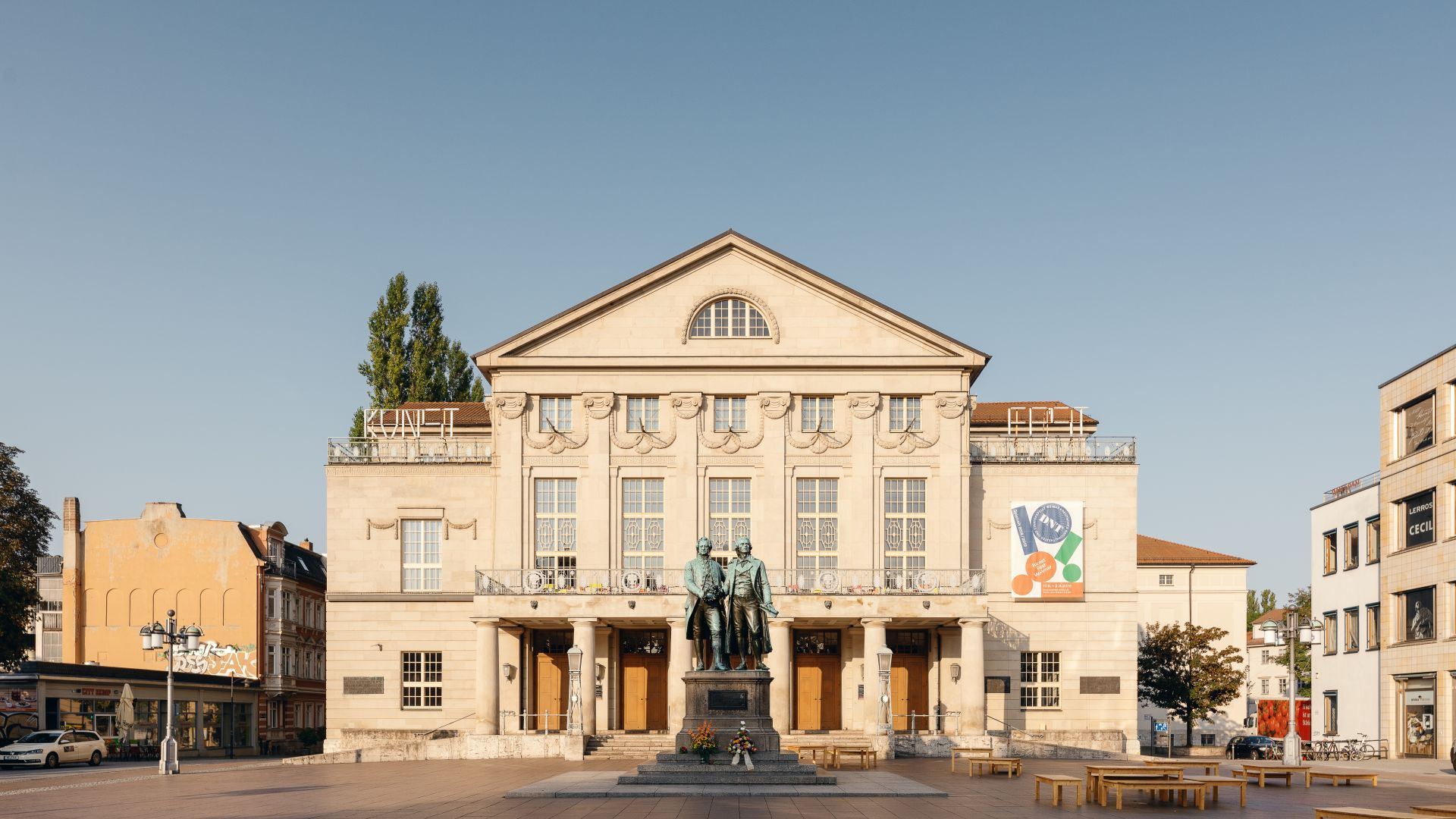Cities & Culture
Goethe cities: follow in the footsteps of the poetic genius
Faust, Werther, Götz von Berlichingen: Johann Wolfgang von Goethe's works are among the most important in world literature, and hardly any other poet is held in such a high regard, both at home and abroad. No wonder that the places he went are also places of pilgrimage.
Frankfurt am Main: where it all began
One of Germany's most important memorials to the art of poerty is, unsurprisingly, the birthplace of Goethe. This is in the middle of Frankfurt, at 23 Grossen Hirschgraben. Strictly speaking, this is a restoration, as the original house burnt down. Still, the "poet's room" contains many salvaged original artifacts, such as his desk and work table. More relics from the 18th century – numerous manuscripts and paintings – can be found in the Goethe Museum next door. If you want to know where the young Goethe liked to hang out, take the S-Bahn to Höchst. Of course, times have changed in the west of Frankfurt, but with the old inns around Schlossplatz, the fortifications on the banks of the Main and the Justinuskirche church, it's easy to travel back in time. It's lively in the heart of Frankfurt, be it in the pub district of Sachsenhausen, on the Museumsufer, or around the Römer. In fact, the Goethestrasse is located between the Old Opera House and the Main Tower, one of the tallest buildings in this city of finance and trade fairs, which is brimming with tall buildings. All the same, it seems that fewer fans of the poet make the pilgrimage here, than fans of luxury shopping ...
 Frankfurt am Main: Half-timbered houses at Römerberg
©DZT (Marcel Waldmann)
Frankfurt am Main: Half-timbered houses at Römerberg
©DZT (Marcel Waldmann)
Leipzig: Inspiring Faust
"My Leipzig's dear to me! It's a little Paris, and educates its people." That's what it says in 'Faust'! Why this honour? While in Leipzig, Goethe (reluctantly) studied law, and during his visits to"Auerbachs Keller"– a restaurant located in the famous Mädler Passage since 1525 – he gathered, among other things, material for his most important work ever. The city returned the favour, and dedicated a monument to the poet. This bronze statue, standing on a high pedestal, is located on the Naschmarkt in front of the Alte Handelsbörse, almost exactly between the city's two most famous churches: the Thomaskirche,the workplace of Johann Sebastien Bach and the Thomanerchor boy's choir, and St. Nicholas Church, the key starting point of the peaceful revolution in the GDR. Even if Goethe only lived here for three years, they were three important ones. His debut novel was also published at the Leipzig Book Fair, still one of the most important literary fairs in the world.
 Leipzig: The Auerbachs Keller restaurant
©DZT (Christof Herdt)
Leipzig: The Auerbachs Keller restaurant
©DZT (Christof Herdt)
Wetzlar: Werther's actual location
"The Sorrows of Young Werther" made not only Goethe famous, but also the town of Wetzlar. The underlying reason: thanks to Goethe's months-long stay as an advocate in this Hessian city, the backdrop for this literary classic was provided by real locations and real people, above all Lotte Buff. The Lotte House at the Deutschordenshof Court in Lotte Street is still a reminder of the ill-fated romance. The Jerusalem House, another memorial, houses the Goethe-Werther collection. A feeling of what it might have been like in Goethe's time in Wetzlar is conveyed within the Old Town,which, with its alleys and small squares, descends in terraces towards the Lahn River. The semi-enclosed ensemble of impressive half-timbered houses and stone buildings looked similar in 1772. Another tip for those who enjoy walking: Along the Goethe Trail in Wetzlar, marker stones indicate the locations referred to in "Werther". To conclude the tour, another museum dedicated to the poet awaits in Garbenheim, as well as a life-size monument on – of course – Goetheplatz.
 Wetzlar: Old Lahn bridge with cathedral
©Tourist Information Wetzlar (Peter-Jörg Albrecht)
Wetzlar: Old Lahn bridge with cathedral
©Tourist Information Wetzlar (Peter-Jörg Albrecht)
Weimar: The pinnacle of the classics
The statues of Goethe and Friedrich Schiller gaze meaningfully at those who stroll across the square in front of the German National Theatre. These two immortals, underpinned by the UNESCO World Heritage title, established Weimar's reputation as the premier city of world literature classics. Goethe in particular, who spent most of his life here and found his final resting place in the historic cemetery, can be found everywhere. However, three places stand out:his residence, the Goethe National Museum, and the Duchess Anna Amalia Library, which was under his supervision for 38 years. It's incredible how much could be restored after the fire in 2004 – Rococo reloaded. Weimar also has a modern face: the Bauhaus movement, which celebrated its 100th anniversary in 2019, was founded here by Walter Gropius along with his arts academy. The classics of Thuringian cuisine are just as famous: Blechkuchen cake, Klösse dumplings and Bratwürst. Burning calories the easy way - take a walk in the "Park an der Ilm", which Goethe played a major role in designing. Highlights include the Roman House and Goethe's Garden House.
 Weimar: View of the German National Theatre with the Goethe Schiller Monument
©DZT (Felix Meyer)
Weimar: View of the German National Theatre with the Goethe Schiller Monument
©DZT (Felix Meyer)